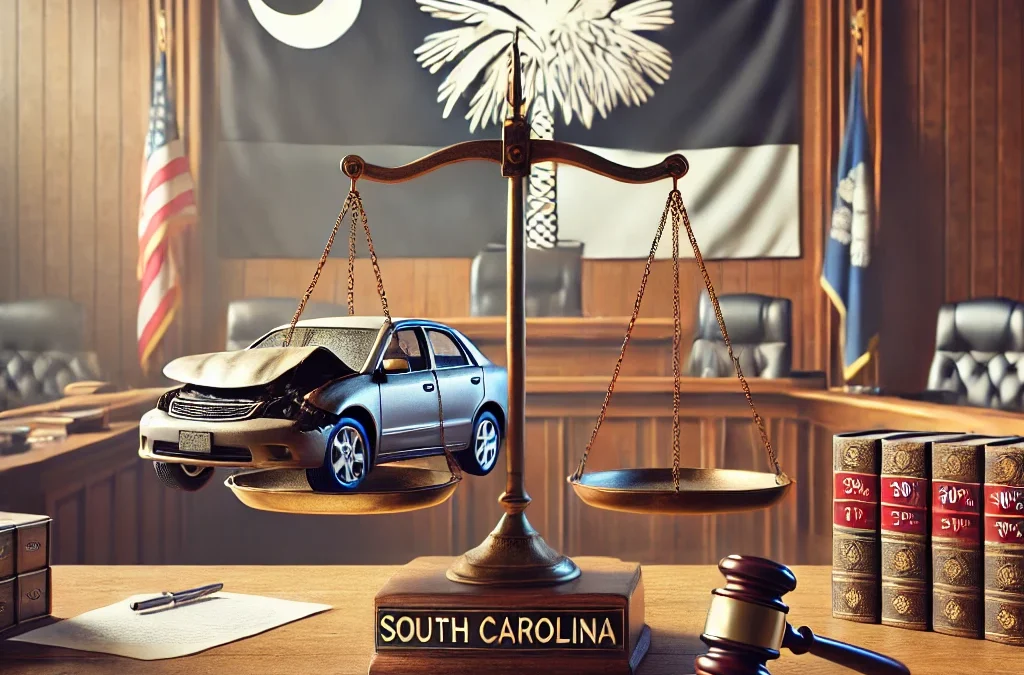How Do South Carolina’s Comparative Negligence Laws Impact Personal Injury Cases?
Personal injury cases often involve questions of fault: who was responsible for the accident, and to what degree?
South Carolina follows a legal doctrine known as comparative negligence, which plays a pivotal role in determining compensation in these cases.
Understanding how this system works can help injury victims navigate the legal process more effectively and protect their rights.
What Is Comparative Negligence?
Comparative negligence is a legal principle that allows courts to allocate fault among all parties involved in an accident.
Unlike states that follow a contributory negligence rule—where even slight fault on the plaintiff’s part can bar recovery—South Carolina applies a modified comparative negligence standard, codified in Section 15-38-15 of the South Carolina Code of Laws.
Under this system:
- A plaintiff can recover damages if they are less than 51% at fault for the accident.
- If the plaintiff’s fault reaches 51% or more, they are barred from recovering compensation.
The plaintiff’s recovery is reduced by their percentage of fault.
For example, if a plaintiff is awarded $100,000 in damages but is found to be 30% at fault, their recovery will be reduced to $70,000.
How Comparative Negligence Works in Practice
Fault Determination
Fault is typically determined by evidence presented during settlement negotiations, mediation, or trial.
Evidence can include:
- Police reports
- Eyewitness testimony
- Surveillance footage
- Expert opinions on accident reconstruction
The allocation of fault is often contested, as defendants and their insurers may argue that the plaintiff shares responsibility to reduce the amount of damages they must pay.
Example Scenario
Imagine a car accident where Driver A is speeding and Driver B runs a red light, resulting in a collision. Driver A suffers injuries and files a personal injury claim. The court determines that:
- Driver A was 40% at fault for speeding.
- Driver B was 60% at fault for running the red light.
They can recover damages because Driver A’s fault is below 51%. However, their compensation will be reduced by 40%.
Impact on Personal Injury Cases
- Reduced Compensation
One of the most significant impacts of comparative negligence is the reduction in compensation an injured party can recover.
Plaintiffs must be prepared to defend their actions and minimize any assigned fault.
- Challenges in Settlement Negotiations
Insurance companies often use comparative negligence to their advantage during settlement discussions. They may argue that the plaintiff bears a higher percentage of fault than they actually do, which can complicate negotiations.
Having strong legal representation can help counter these tactics.
- Jury Considerations
If a case goes to trial, the jury plays a critical role in assigning fault percentages. Jurors are instructed to consider the actions of all parties and determine the degree of responsibility each bears.
This makes the presentation of clear, compelling evidence crucial to a successful outcome.
- Multiple Defendants
When multiple defendants are involved, South Carolina’s comparative negligence laws allow for joint and several liability under certain circumstances.
This means a plaintiff can recover the full amount of damages from any one defendant, even if that defendant’s percentage of fault is lower than others. The defendant who pays can then seek contribution from other at-fault parties.
Common Personal Injury Cases Affected
South Carolina’s comparative negligence laws apply to a wide range of personal injury cases, including:
- Car Accidents: Both drivers may have contributed to the crash.
- Slip and Falls: Property owners may argue that the plaintiff’s carelessness caused their injury.
- Medical Malpractice: Where multiple healthcare providers may share liability.
- Product Liability: Where defendants may claim that the plaintiff misused the product.
Tips for Navigating Comparative Negligence Cases
- Gather Strong Evidence: Collect photos, videos, witness statements, and official reports to support your claim and minimize allegations of fault against you.
- Avoid Giving Statements Without Legal Advice: Insurance adjusters may try to get you to admit fault. Always consult with an attorney before discussing the details of your case.
- Understand Your Rights: Knowing you can still recover damages, even if partially at fault, can help you pursue fair compensation.
- Hire an Experienced Attorney: A skilled personal injury attorney can help you build a strong case, negotiate with insurers, and advocate for your best interests in court.
Why South Carolina’s Comparative Negligence Laws Matter
These laws reflect a balanced approach to personal injury claims, ensuring injured parties can seek compensation while holding everyone accountable for their actions.
However, the 51% rule emphasizes the importance of building a strong case to demonstrate that the other party was primarily responsible for the accident.
Need Help With Your Personal Injury Case in South Carolina?
South Carolina’s comparative negligence laws significantly impact how personal injury cases are resolved.
By understanding how fault is assigned and how it affects potential compensation, injury victims can better protect their rights and pursue the recovery they deserve.
If you’ve been injured in an accident, our team at Seaton & Duncan is here to help.
We’ll guide you through the legal process, fight to minimize any fault assigned to you, and work tirelessly to secure fair compensation.
Contact Seaton & Duncan today for a consultation. Let us help you understand your legal options and build a strong case for the compensation you deserve.
Ready To Speak With An Attorney?
Let’s discuss the details of your case and see if we can help.

